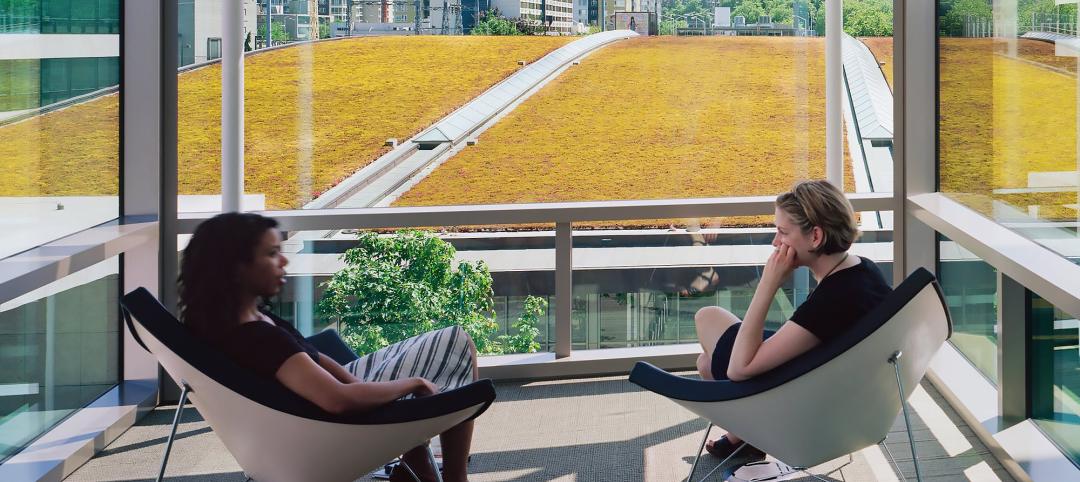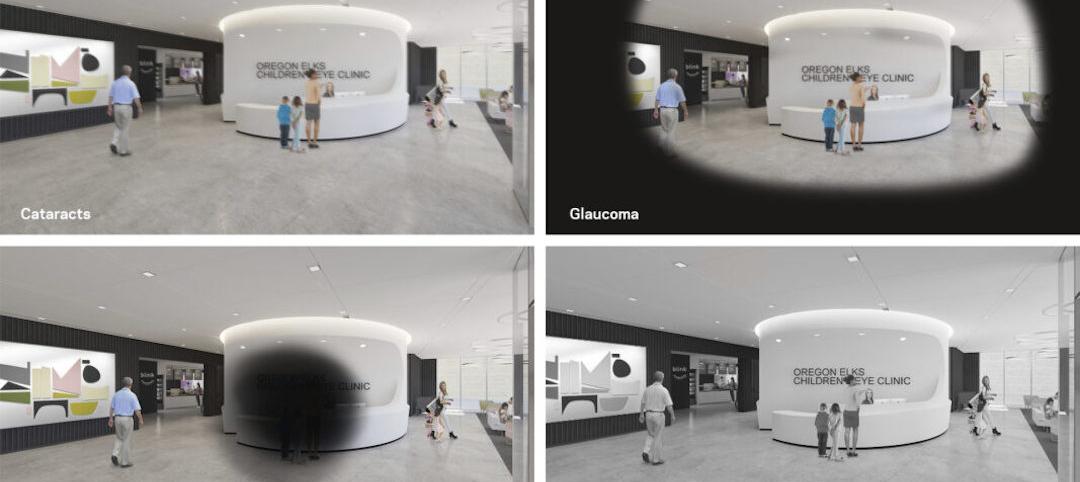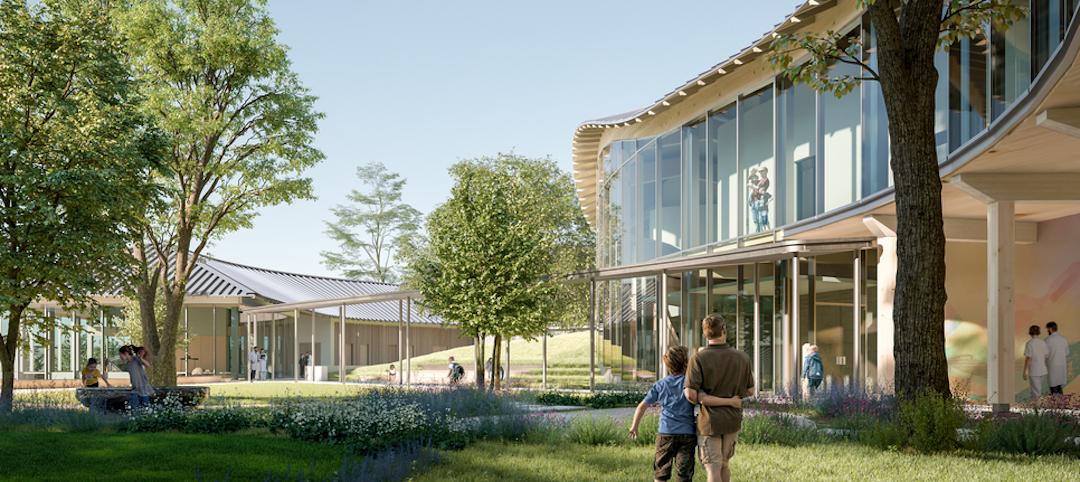While hospitals are dedicated to healing, they are some of the most resource-intensive buildings on the planet. On average, they use twice the energy of most other building types. In the U.S., the healthcare system accounts for 10% of the nation’s total carbon dioxide emissions.
Typically complex and large, hospitals must operate 24/7. While essential, this results in higher energy use than a typical building. This has both an immediate and direct impact — in the cost of operational energy use — as well as longer term, significant effects of climate change on public and individual health. It’s important to address energy consumption in hospitals as it can lower operating costs, extend the life of utility equipment, reduce emissions and perhaps most important, create environments that support life especially at fragile moments.
How can hospitals reduce their energy use — as part of a holistic system of sustainable benefits — and stay operationally resilient, but still maintain solid, round-the-clock care? Fortunately, design can help hospitals tackle these sustainability issues.
In the U.S., hospitals have an average energy use intensity (EUI) — which is energy use per square foot — of 234 kbtu/sf/year. Yet a holistic system of design strategies now make it possible to reduce the energy use of healthcare buildings by almost 70%.
Two new hospitals in the Seattle area, including Overlake Hospital Medical Center’s FutureCare East Tower and St. Michael’s Medical Center Acute Care Expansion, utilize simple yet innovative design features to dramatically lower their energy use. Together, both hospitals illustrate key ways healthcare buildings can lower their energy use and achieve groundbreaking performance. Below are a series of sustainable design features hospitals can implement so they are more energy-efficient, employ healthier materials and reduce their carbon footprint.
Key Strategies to Lower Energy Use and Foster Sustainable Healthcare Systems
1. Energy Modeling as a Design Tool
Much in the same way that an institution begins a design and construction project with a budget — which is used as a constant measurement tool — a project can benefit from an “energy budget” to steer energy performance design. An energy budget sets an energy target at the beginning of the project and deploys modeling tools to measure the impact of a building’s needs and design changes on iterative energy, in a similar way that construction estimates work to track the progress of the work and keep the project on track. It’s critical to monitor energy and carbon budgets from the beginning so the client and design team can set and achieve sustainable goals, check progress and adjust at each phase to be sure the project is on budget.
2. Outside the Building
In new hospital construction and renovations, it is critical to address the exterior of the hospital. In climates with variable temperatures, outdoor design strategies can keep both heat out in the summer and the cold out in the winter. Shades on the outside of a building can help keep the interior from getting too warm, providing a triple benefit: it decreases the use of mechanical systems and lowers operational costs to cool the building, allows the use of smaller and more efficient heating and cooling systems and makes spaces more comfortable for patients, caregivers and visitors.
3. High-Performance Windows
Views to nature can speed healing. In patient rooms, windows with two or three layers of glass can reflect heat gain and provide insulation. In some facility types, patient rooms can benefit from operable windows — those that can open and close. Where that’s not feasible, amenity areas like caregiver break rooms and dining areas can benefit from both the natural ventilation and daylight, which can improve cognition, boost mood and decrease stress.
4. Efficient Heating and Cooling
Heating and cooling strategies that capture outdoor cool air to cool hospital interiors and heated air to preheat fresh air entering the building can reduce energy use by more than 200%. To build efficient heating and cooling systems, it can help to tune the amount of energy needed so equipment only runs when it is required. For example, hospitals can use high-efficiency air cooled chillers for the peak cooling loads in summer and high-efficiency condensing boilers for the coldest days in winter. It’s also important to invest in better controls, especially to allow unoccupied turndown of high-intensity spaces such as operating rooms. By building in adaptability, these smart systems can save significant amounts of energy.
5. Separate Thermal and Ventilation Systems
An additional building technique is to separate systems that distribute fresh air with those that warm and cool spaces, especially in hospital inpatient rooms. This goes hand-in-hand with exterior building strategies and sun protection touched on above. Used together, these techniques can create smaller energy demands and as a result, more efficient equipment for cooling and heating. In addition, keeping an air circulation system separate allows for more compact ducts and less dedicated space for these systems.
6. Lighting Strategies
Smart lighting strategies such as features that maximize abundant natural light via high-performance windows, light wells and skylights, particularly in cloudy climates, can help reduce energy use. Additional strategies include dimmable interior and exterior LED lighting that is programmed to turn off when not in use.
7. Utility Efficiency Funding
Although utility funding varies by country and jurisdiction, where available, utility rebates can compress the return on investment for high efficiency projects to a shorter timeframe, sometimes to just a year or two.
8. Innovative Materials
By prioritizing healthy materials, healthcare environments can reduce the amount of greenhouse gases emitted during the production and construction process and create spaces that better support healing. Although typically used in commercial buildings, cross-laminated timber (CLT) — pre-fabricated engineered wood panels — provide unique opportunities to transform healthcare environments. CLT has a low carbon footprint and the natural healing benefits of wood that calm and reduce stress. It can also be easily assembled off-site to save construction time and costs, increasing the timeframe in which clinical operations and revenue can take place.
9. Renewable Energy
Rather than rely solely on fossil fuels for energy, transitioning to clean, renewable energy, such as solar roofs in sunny climates, can provide a sustainable supplemental energy source. Other renewable energy sources such as wind power can provide a greener source of energy, and even help hospitals become energy independent. Transitioning to clean, renewable energy will be a key energy management move over the coming years as the cost competitiveness of renewables overtakes fossil fuel costs. Make a plan for electrification — if not immediately, then over time. This will enable healthcare campuses to wean themselves off fossil fuels and take advantage of a rapidly greening electrical grid and the attendant carbon emission reductions.
10. Landscape Elements
Outdoor landscape features like trees and green plants not only lower the temperature of their immediate surroundings in the summer, they can significantly increase air quality as they release oxygen, store carbon dioxide and filter out pollutants, making them natural purifiers. Views and exposure to nature has numerous restorative benefits for patients and caregivers, such as lower heart rate and blood pressure, and less need for pain medicine. Furthermore, hospital gardens with sustainably grown local food can nourish staff and patients while reducing costs associated with imported food.
11. Green Transportation
It’s important to consider what happens outside the hospital too. Staff, patient and visitor travel to and from a hospital can have a crucial impact. Transit connections, areas to wait for rideshares, walkability and bike-friendliness — via design strategies such as welcoming landscaped paths and covered designated areas for drop-off and pick-up — can reduce the reliance on cars and the costs associated with parking development and maintenance.
To Summarize
The conversation around energy-efficient and sustainable hospitals is only just beginning. As more hospitals consider sustainability as not just a “nice-to-have,” but a critical component of their overall strategy and business model, countries will continue to see accelerated progress. With the right policies, further breakthroughs and innovative systems — such as all-electric and net zero carbon facilities — hospitals can lower and even eliminate carbon emissions from energy consumption. As a result, they can reduce the use of critical resources, provide long term cost-savings and support a healthier environment for people and the planet.
More from Author
NBBJ | Oct 3, 2024
4 ways AI impacts building design beyond dramatic imagery
Kristen Forward, Design Technology Futures Leader, NBBJ, shows four ways the firm is using AI to generate value for its clients.
NBBJ | Jun 13, 2024
4 ways to transform old buildings into modern assets
As cities grow, their office inventories remain largely stagnant. Yet despite changes to the market—including the impact of hybrid work—opportunities still exist. Enter: “Midlife Metamorphosis.”
NBBJ | May 10, 2024
Nature as the city: Why it’s time for a new framework to guide development
NBBJ leaders Jonathan Ward and Margaret Montgomery explore five inspirational ideas they are actively integrating into projects to ensure more healthy, natural cities.
NBBJ | Oct 18, 2023
6 ways to integrate nature into the workplace
Integrating nature into the workplace is critical to the well-being of employees, teams and organizations. Yet despite its many benefits, incorporating nature in the built environment remains a challenge.
NBBJ | May 8, 2023
3 ways computational tools empower better decision-making
NBBJ explores three opportunities for the use of computational tools in urban planning projects.
NBBJ | Jan 17, 2023
Why the auto industry is key to designing healthier, more comfortable buildings
Peter Alspach of NBBJ shares how workplaces can benefit from a few automotive industry techniques.
NBBJ | Aug 4, 2022
To reduce disease and fight climate change, design buildings that breathe
Healthy air quality in buildings improves cognitive function and combats the spread of disease, but its implications for carbon reduction are perhaps the most important benefit.
NBBJ | Feb 11, 2022
How computer simulations of vision loss create more empathetic buildings for the visually impaired
Here is a look at four challenges identified from our research and how the design responds accordingly.
NBBJ | Jan 7, 2022
Supporting hope and healing
Five research-driven design strategies for pediatric behavioral health environments.
NBBJ | Nov 23, 2021
Why vertical hospitals might be the next frontier in healthcare design
In this article, we’ll explore the opportunities and challenges of high-rise hospital design, as well as the main ideas and themes we considered when designing the new medical facility for the heart of London.
















